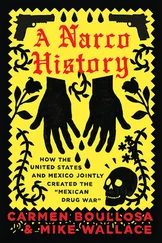Tom Phillips - Humans - A Brief History of How We F*cked It All Up
Здесь есть возможность читать онлайн «Tom Phillips - Humans - A Brief History of How We F*cked It All Up» весь текст электронной книги совершенно бесплатно (целиком полную версию без сокращений). В некоторых случаях можно слушать аудио, скачать через торрент в формате fb2 и присутствует краткое содержание. Город: Toronto, Год выпуска: 2019, ISBN: 2019, Издательство: Hanover Square Press, Жанр: История, Юмористические книги, на английском языке. Описание произведения, (предисловие) а так же отзывы посетителей доступны на портале библиотеки ЛибКат.
- Название:Humans: A Brief History of How We F*cked It All Up
- Автор:
- Издательство:Hanover Square Press
- Жанр:
- Год:2019
- Город:Toronto
- ISBN:978-1-48805-113-5
- Рейтинг книги:4 / 5. Голосов: 1
-
Избранное:Добавить в избранное
- Отзывы:
-
Ваша оценка:
- 80
- 1
- 2
- 3
- 4
- 5
Humans: A Brief History of How We F*cked It All Up: краткое содержание, описание и аннотация
Предлагаем к чтению аннотацию, описание, краткое содержание или предисловие (зависит от того, что написал сам автор книги «Humans: A Brief History of How We F*cked It All Up»). Если вы не нашли необходимую информацию о книге — напишите в комментариях, мы постараемся отыскать её.
Humans: A Brief History of How We F*cked It All Up — читать онлайн бесплатно полную книгу (весь текст) целиком
Ниже представлен текст книги, разбитый по страницам. Система сохранения места последней прочитанной страницы, позволяет с удобством читать онлайн бесплатно книгу «Humans: A Brief History of How We F*cked It All Up», без необходимости каждый раз заново искать на чём Вы остановились. Поставьте закладку, и сможете в любой момент перейти на страницу, на которой закончили чтение.
Интервал:
Закладка:
When not enforcing his strict anticoffee laws, he liked to wind down by executing people for literally any other reason he could think of: for playing the wrong kind of music, for talking too loudly, for walking or sailing too close to his palace or just for being women. Especially for being women. He really hated women.
By the end of his reign, Murad wasn’t even really executing people anymore, as that implies he at least had some sort of vague pretext. He was pretty much just running around with a sword, pissed out of his skull, killing any poor bastard he came across. Some estimates suggest that he might have personally executed around 25,000 people during just 5 years of his 17-year reign—which on average would be more than 13 every single day. Again, it’s really worth emphasizing that this is the guy who doesn’t get “the Mad” attached to his name.
Oh, and obviously he also murdered most of the rest of those brothers that Osman had left not-murdered.
When Murad IV died in 1640 (of cirrhosis of the liver, which must have come as a bit of a surprise to his subjects, who he’d banned from drinking alcohol), there was in fact just one nonmurdered brother remaining: Ibrahim. By this point Ibrahim had spent virtually all of his 25 years of life confined to the Cage, living in perpetual fear of his seemingly inevitable murder. He wasn’t entirely wrong about that: Murad did in fact order Ibrahim’s murder from his deathbed, preferring to see the Ottoman dynasty die out entirely than Ibrahim come to the throne. The only reason the murder didn’t happen was that, as is often the case with bickering brothers, their mother, Kösem, stepped in and stopped it.
But if everybody was tempted to breathe a sigh of relief now that Murad was out of the picture, Ibrahim soon cured them of that mistake. Because if he hadn’t been insane when he went into the Cage, he certainly was when he came out.
Much like Mustafa before him, he was initially reluctant to come out of the Cage at all, as he was convinced it was a huge trick on the part of Murad, all the better to murder him with. The only thing that would reassure him was when they actually brought him Murad’s dead body.
Once they’d coaxed him out, Kösem—perhaps realizing that he wasn’t terribly well suited to ruling—suggested that he might like to busy himself with some concubines instead. Unfortunately, Ibrahim took her suggestion to extremes.
In addition to his other proclivities (like being obsessed with fur, wearing fur coats all the time and demanding that every room in his palace was decked out with huge quantities of fur), Ibrahim was sexually obsessed and virtually insatiable. This suited Kösem, who was busy ruling in his place—she had Ibrahim supplied with a vast number of slave girls and kept him hopped up on aphrodisiacs so that exhaustion and impotence wouldn’t leave him sexually incapable for long enough that he might accidentally do some ruling of his own.
Ibrahim’s sexual habits included—I’m going to be honest here—some extremely grim shit. As a prince of Moldavia, Dimitrie Cantemir, wrote some years later: “In the palace gardens he frequently assembled all the virgins, made them strip themselves naked and, neighing like a stallion, ran among them and, as it were, ravished one or the other, kicking or struggling by his order.”
It gets worse. According to Cantemir, one day Ibrahim saw a wild cow when he was on a trip, and became obsessed by its genitals. So much so that he had a cast made of them, and then copies of the cast crafted in gold and sent all around the empire, with an order that his servants find a woman whose genitals could match the cow’s.
Yeah.
(One caveat: it’s worth noting that Cantemir might not be a wholly unbiased source. On the one hand, he had lived and studied in Constantinople and spoke Turkish, and was writing only a few decades after the events. On the other hand, his book was called The History of the Growth and Decay of the Ottoman Empire , and he wrote it shortly after switching Moldavia’s allegiance from the Ottomans to Russia, losing catastrophically in battle, then being deposed and exiled, so he might have had a slight grudge. The supposedly “decaying” Ottoman Empire lasted in some form for another two centuries.)
Ibrahim’s search for his ideal woman, whether or not prompted by a bovine encounter, ended with her being found in Armenia. She was named Sugar Cube, and she quickly became Ibrahim’s favorite. Things start spiraling out of control: Sugar Cube told Ibrahim that one of his other concubines had been unfaithful, which sent Ibrahim into such a rage that he slashed his own son’s face with a knife for joking about it, and then—being unable to tell which woman was the supposedly guilty one—had all but two of his 280-strong harem tied up in sacks and drowned in the Bosphorus. Only one survived. Sometime after this, fearing Sugar Cube’s growing influence, Kösem invited her over for dinner and a little girl chat, during which she quickly murdered her. (She told Ibrahim that Sugar Cube had died of a sudden illness.)
By this point, Ibrahim’s excesses had alienated pretty much everybody, and the cost of keeping him in his lavish lifestyle of sex and fur was draining public funds. He had several sons, and so the dynasty was no longer under threat. Even Kösem agreed things had gone too far, and signed off on a plan to depose him. And so for the second time in a couple of decades, the Janissaries revolted; a mob dismembered the grand vizier, and they marched Ibrahim back to his dreaded Cage. He spent the last 10 miserable days of his life back in the same place where he’d spent most of his childhood, before the plotters decided to take the quick route out and murdered him.
The history of this period in the Ottoman Empire reads so much like a bloody, misogynist fever dream—something that makes Game of Thrones look like an episode of The Joy of Painting with Bob Ross —that it’s occasionally hard to believe. And to be sure, it’s another case where it’s sometimes difficult to distinguish what was real and what was simply propaganda to justify all the political upheaval and murders.
The story of this time in history isn’t just one of crazed men, and a few powerful women trying to keep things stable; across large parts of the world it was an era of new technology and dramatic economic shifts, with allegiances in flux, borders being redrawn and wars all over the place. The Ottoman Empire was no exception. By the second half of the seventeenth century, when they finally left this period of instability, the Ottomans had waved goodbye to the era of institutional fratricide and civil war, had a newly monetized economy and had effectively changed their system of government from a feudal absolutist monarchy to a modern bureaucracy. So far from this being the point that marked the start of the Ottoman Empire’s decline, on the whole, they actually came out of it all pretty well!
That’s probably not much comfort to all the people who got murdered, though.
Germany’s Wilhelm II believed himself to be a master negotiator with a diplomatic golden touch. In fact, his only gift was insulting just about every other country he came into contact with, which may help explain how World War I happened.
Not the worst king ever—he unified the crowns of Scotland, England and Ireland and commissioned a solid Bible—but he was obsessed with witch hunting, personally supervising witch torture and writing a book about his great witch-hunting exploits.
Christian VII of Denmark was a poor king in many ways, but probably his obsessive, uncontrollable masturbation was the least kingly aspect of it.
Читать дальшеИнтервал:
Закладка:
Похожие книги на «Humans: A Brief History of How We F*cked It All Up»
Представляем Вашему вниманию похожие книги на «Humans: A Brief History of How We F*cked It All Up» списком для выбора. Мы отобрали схожую по названию и смыслу литературу в надежде предоставить читателям больше вариантов отыскать новые, интересные, ещё непрочитанные произведения.
Обсуждение, отзывы о книге «Humans: A Brief History of How We F*cked It All Up» и просто собственные мнения читателей. Оставьте ваши комментарии, напишите, что Вы думаете о произведении, его смысле или главных героях. Укажите что конкретно понравилось, а что нет, и почему Вы так считаете.












